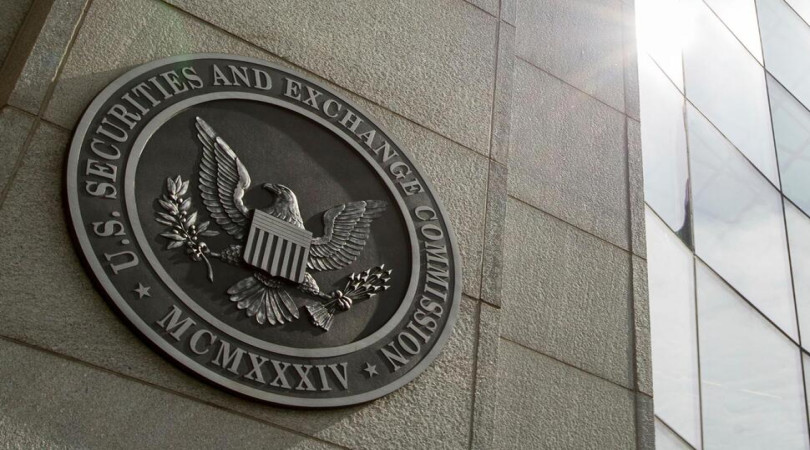While the majority of economists surveyed by the National Association for Business Economics peg the odds of a 2023 recession at 58%, don't discount the portfolio power of select financial services exchange-traded funds, or ETFs. Fund inflows have slowed since Silicon Valley Bank and FTX imploded, and there is uncertainty among analysts on prospects for the financial sector in the second quarter of 2023.
But funds prices look accommodating to value-minded investors, and the Federal Reserve is showing signs of slowing its cycle of interest rate hikes. Smart investors may want to get in front of an upward turn for banks, brokerages, fund companies and insurance providers. If the sector begins a recovery in the second half of 2023 through 2024, these financial services ETFs should lead the way:
| ETF | EXPENSE RATIO |
| Financial Select Sector SPDR Fund (ticker: XLF) | 0.1% |
| Vanguard Financials ETF (VFH) | 0.1% |
| iShares U.S. Financials ETF (IYF) | 0.39% |
| iShares MSCI Europe Financials ETF (EUFN) | 0.49% |
| Ark Fintech Innovation ETF (ARKF) | 0.75% |
| Invesco KBW Bank ETF (KBWB) | 0.35% |
| Direxion Daily Financial Bull 3X Shares ETF (FAS) | 0.96% |
Financial Select Sector SPDR Fund (XLF)
For all the troubles with regional bank failures and tough lending and credit issues, big bank stocks had a positive first quarter of 2023. XLF is loaded with brand name banks like JPMorgan Chase & Co. (JPM), Bank of America Corp. (BAC) and Wells Fargo & Co. (WFC). The fund, offered by State Street Global Advisors, is one of the larger financial sector ETFs with $29.6 billion in assets under management. For broad exposure to the sector, especially the banking portion of the industry, XLF covers a lot of ground for investors. The ETF charges an expense ratio of 0.1%, which works out to $10 in annual fees for a $10,000 investment. The fund has a total return of 10% over the past 10 years.
Vanguard Financials ETF (VFH)
This Vanguard fund offers a more diverse selection of financial stocks than XLF, as it tracks the Spliced U.S. Investable Market Financials 25/50 Index, which is loaded up with 373 financial industry stocks. This bank-heavy ETF is also expected to benefit from ongoing high interest rates, which tend to play into the banking sector's favor, as a high-rate environment favors the bank's penchant for short-term borrowing and long-term lending. The fund's 10-year total return rate stands at 9.5%.
iShares U.S. Financials ETF (IYF)
This Blackrock-managed ETF can protect investors in high-inflation environments, which tend to bring issues like supply chain woes, labor shortages and more robust wages to the table. The fund tracks the Dow Jones U.S. Financials Index, which is down more than 10% over the past year. Even so, IYF should share in a big bank run-up in the second half of 2023 and beyond, given its high exposure to the financial sector. The fund has delivered a total return of 9.4% over the past 10 years. Its total net assets of $1.8 billion are on the low end of the financial ETF spectrum.
iShares MSCI Europe Financials ETF (EUFN)
This relatively small finance sector ETF – with $1.6 billion in assets under management – focuses on the European financial industry, tracking the MSCI Europe Financials Index. The fund is loaded with familiar names – at least to Euro-centric investors – like HSBC Holdings PLC (HSBA), Allianz SE (ALIZY) and Zurich Insurance Group AG (ZURVY). If you're concerned about recent U.S. regional bank woes, pivoting to Euro financial stocks can still give you that broad exposure to financials but without some of the risk that comes from one geographic area. The fund has already generated an 11.6% total return for investors this year through April 26.
Ark Fintech Innovation ETF (ARKF)
Ark Invest's founder and chief executive Cathy Wood has ARKF cooking in 2023, with the fund up 20.9% through April 26. Wood has largely done so by avoiding traditional finance stocks like banks and credit card companies and has focused instead on rising fintech and cryptocurrency stocks that have outperformed traditional finance stocks so far in 2023. Take Coinbase Global Inc. (COIN), which comprises 9.2% of ARKF. The stock is up 52.3% in 2023, mainly from an upswing in investor support for cryptocurrencies, the company's diligent efforts to cut costs and a pivot to revenue-producing products like new subscription services.
ARKF also holds stocks such as Spotify Inc. (SPOT), Nvidia Corp. (NVDA) and DraftKings Inc. (DKNG), which have helped support the fund in 2023. That kind of selection makes ARKF a shining star in the finance firmament.
Invesco KBW Bank ETF (KBWB)
This financial ETF tracks the market-capitalization-weighted KBW Nasdaq Bank Index. The fund is down 21% in 2023 through April 26, but there's reason for hope for a fund that has generally delivered the goods for investors, with a 23.7% total return in the past three years. High first-quarter earnings and fatter margins are pulling big bank stocks like JPMorgan and Bank of America up right now and are fueling fund performance as the second quarter gets underway.
Direxion Daily Financial Bull 3X Shares ETF (FAS)
This leveraged, short-term-oriented ETF looks to maximize profits inversely from the financial sector's most bullish trends by generating three times the daily returns of the Financial Select Sector Index. In March, for example, the fund produced big returns by shorting regional banks at a time when Silicon Valley Bank and Signature Bank were collapsing. FAS, however, is no buy-and-hold fund: Leveraged ETFs offer significantly more risk than traditional ETFs, and should not be held for long periods. The fund does hold up performance-wise, returning 323.4% over the past 10 years and 132.9% over the past three years, but that performance comes with a hefty price tag.





